Exploring Small Pet Birds That Talk: Insights and Guidelines

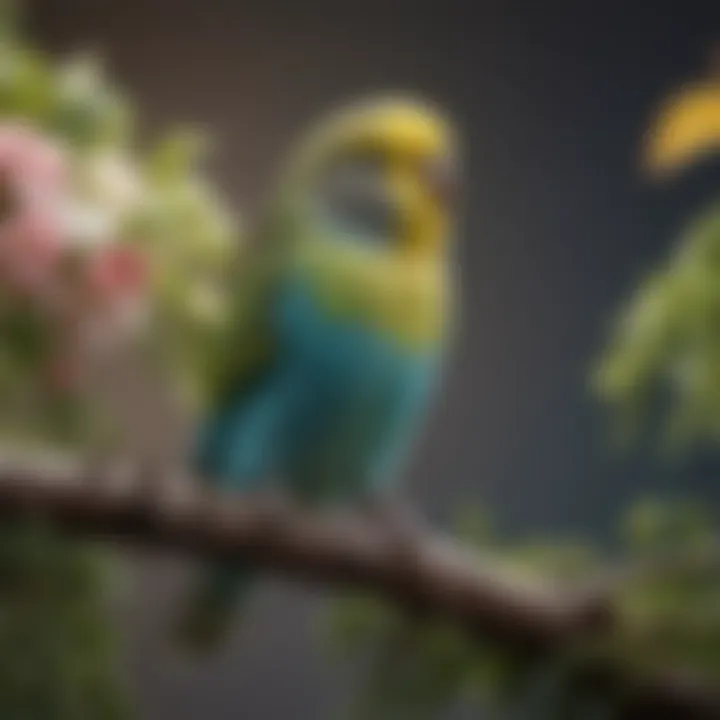
Intro
The affinity for talking pet birds spans generations and cultures, captivating bird enthusiasts and casual pet owners alike. Small pet birds, known for their ability to mimic human speech and other sounds, offer a unique companionship that goes beyond traditional pet ownership. Understanding the complexities that come with these vocal avians is crucial, whether you are a seasoned bird owner or considering bringing home your first feathered friend.
This guide presents a comprehensive examination of various small pet birds that possess remarkable talking abilities. It highlights key species known for their vocal skills, along with their care requirements, behavioral tendencies, and the implications of their unique communicative capacities. Mindfully caring for a talking bird requires a blend of knowledge, patience, and dedication. Not only does this guide serve to educate on the necessities for a happy and healthy pet, but it also seeks to inspire responsible and informed pet ownership.
Prolusion to Talking Birds
Talking birds captivate people’s imaginations and interest. Their ability to mimic human speech and sounds offers a unique bond between pet and owner. In this section, we discuss the significance of understanding talking birds. Ignoring initial impressions or myths, one can see they are complex creatures with rich lives.
Many choose talking birds for companionship, entertainment, or as conversation starters. However, it’s crucial to recognize they need more than mere attention. Their vocalizations indicate emotions or requests. Birds like Budgerigars or Cockatiels connect through interactions. As such, knowing their characteristics can significantly improve their care and your relationship with them.
Talking birds also serve as great entry points into aviculture. New bird owners often start with species known for their vocal abilities. Feathered companions have their unique charm. They challenge the notion of traditional pets and fill homes with life and laughter. When you choose to welcome a talking bird into your life, consider the commitment involved in training, socialization, and environmental needs. Understanding these factors can lead to a harmonious living situation for both pet and owner.
"The joy of having a bird that talks is in the interaction and understanding that develops over time."
In summary, the exploration of talking birds is vital for anyone considering these fascinating pets. It lays the foundation for deeper knowledge throughout the article and acts as guidance for making informed decisions.
Definition and Characteristics of Talking Birds
Talking birds are typically defined as species capable of mimicking human vocalizations. Their ability to talk varies among individuals, influenced by species traits and individual inclination. Birds such as African Grey Parrots have deeper cognitive skills than others, allowing them to learn a wider range of words. On the other hand, species like Lovebirds may chatter but have less ability to form coherent speech.
Characteristic features of talking birds include:
- Vocal Mimicry: The ability to imitate sounds in their environment, not limited to human speech.
- Intelligence: Higher cognitive functions allow birds to learn associations between words and actions.
- Social Nature: Talking occurs mostly in social contexts, as many birds thrive on interaction with their owners.
- Development of Speech: Phrases can develop over time, often reflecting the owner’s speech patterns or common household sounds.
Understanding these traits helps in creating a suitable environment for talking birds, ultimately enhancing their ability to communicate.
Popular Small Pet Birds That Speak
The world of pet birds that talk draws many enthusiasts, aligning the joy of pet ownership with the fascination of communication. The ability to mimic human speech is not just an entertaining trait; it enriches the bond between birds and their owners. In this section, we explore several species known for their talking ability, emphasizing their unique characteristics, benefits, and what potential bird owners should consider before making a choice.
Budgerigar (Budgie)
Budgerigars, commonly known as budgies, are small, sociable birds native to Australia. Despite their small size, they are renowned for their vibrant personality and vocal capabilities. Budgies can learn a variety of words and phrases, often developing a playful rapport with their owners. Their mimicry skills can rival larger parrots, making them an excellent choice for those seeking a talking bird on a more manageable scale. Budgies thrive in social settings, and their environment should reflect this, ideally having companionship with another budgie.
Cockatiel
Cockatiels are among the most popular small talking birds. They have a cheerful disposition and are known for their whistling abilities. Many owners find their melodic sounds endearing. Cockatiels possess a friendly nature, often enjoying interaction with humans. While they may not have an extensive vocabulary like some larger parrots, they display a robust personality that can make them charming companions. Proper training can encourage cockatiels to develop some speech, fostering a stronger meaningful connection with their owners.
African Grey Parrot
The African Grey Parrot is highly esteemed in the avian community for its intelligence and talking ability. Known for having a sophisticated vocabulary, these birds can learn hundreds of words and even contextualize language to an extent. Their inquisitive nature makes them engaging pets, but they require significant mental stimulation. It's essential for owners to provide engaging activities to prevent boredom. The African Grey thrives on interaction, which can make them both rewarding and challenging to care for.
Lovebirds
Lovebirds are small, affectionate parrots, usually characterized by their strong pair bonding. While they are not as proficient at talking as some other species, they can learn several words and phrases, especially when trained from a young age. Their playful behavior and lively interaction often compensate for their limited speaking abilities. When kept in pairs, lovebirds communicate with one another quite frequently, but they can still develop a bond with their human caregivers if given sufficient attention.
Parrotlet
Parrotlets are tiny birds with big personalities. These small parrots are known for being feisty and playful. While they may not have the largest vocal repertoire, they can learn a few words and mimic some sounds. Parrotlets can be quite demanding in their need for interaction and can often develop strong bonds with their owners. They require socialization and stimulation to thrive and can be more challenging for first-time bird owners due to their assertive behavior.
In summary, understanding the specific traits and talking abilities of these small pet birds is essential for any potential owner. Each species offers a unique mix of characteristics, ensuring that prospective bird owners can find a match tailored to their preferences and lifestyle.
Understanding Vocalization in Birds
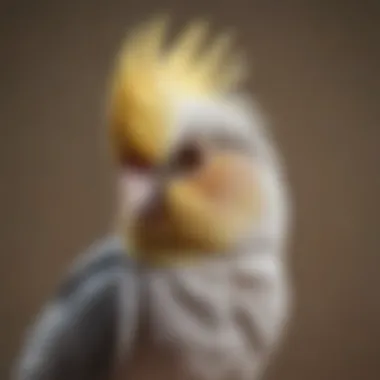
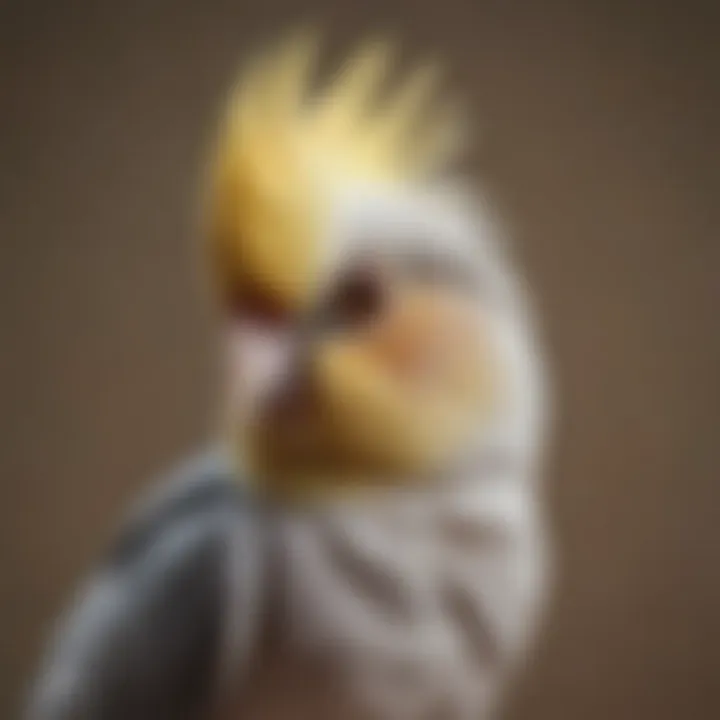
Understanding how and why birds vocalize is crucial to comprehending their behavior, especially for pet owners and enthusiasts. Vocalizations are not merely sounds; they serve a variety of functions and hold significant meaning. This section will explore the types of vocalizations birds make and the reasons behind their talking abilities, providing insights to foster better human-avian interactions and improve care practices.
Types of Vocalizations
Birds produce a range of vocalizations that can convey different messages. Here are some common types:
- Songs: These are often melodious sounds made primarily by males to attract a mate or establish territory. Many pet birds, such as budgerigars, have notable songs.
- Calls: These are shorter, simpler sounds used for communication among birds. Calls help maintain group cohesion and alert other birds to danger. For example, lovebirds frequently use calls to stay in contact with their flock.
- Mimicry: Some species, such as African Grey Parrots, have an exceptional capacity for imitating sounds from their environment, including human speech. This can be a sign of intelligence and social adaptability.
Understanding these vocalization types helps owners interpret their birds' needs and feelings, fostering a more communicative relationship. Recognizing the context behind each sound can significantly improve the care a pet bird receives.
Reasons for Talking
Birds engage in vocalization for several reasons. Knowing these can aid owners in creating an environment that encourages healthy communication. Common reasons for talking include:
- Social Interaction: Birds are social creatures. Speaking or mimicking sounds can signify a desire for interaction. Owners may notice their birds talking more when they are actively engaging with them.
- Attention Seeking: Birds may learn to mimic words or phrases in hopes of getting attention from their owners. If a bird realizes that saying a particular word prompts a response, it may repeat that sound frequently.
- Environmental Adaptation: In captivity, birds adapt to their surroundings. They often mimic sounds they hear regularly, including voices or noises from the television. This mimicry can be a way for birds to fit into their new social environment.
In summary, understanding the vocalization patterns of small pet birds helps owners appreciate their pets' behavioral nuances. It fosters better communication, enhances the human-animal bond, and ultimately contributes to a fulfilling ownership experience.
"Awareness of vocalization types and reasons can lead to more meaningful interactions between birds and their caretakers."
For more insights, consider visiting resources such as Wikipedia or relevant forums like Reddit.
Factors Influencing a Bird's Ability to Talk
Understanding the factors that influence a bird's ability to talk is essential for anyone interested in keeping these vocal companions. Several elements play a significant role in determining how well a bird can mimic human speech and other sounds. By exploring these factors, prospective bird owners can make informed decisions regarding their pet's training and care, ultimately leading to a more satisfying interaction.
Species-Specific Traits
Different species of birds exhibit varying potential for vocal mimicry. For example, the African Grey Parrot is renowned for its advanced speaking abilities. This species is often regarded as one of the most intelligent birds, capable of learning a large vocabulary and understanding context.
On the other hand, species like Budgerigars have their strengths. They can develop impressive mimicry skills, but their capacity may not match that of an African Grey.
To summarize:
- Higher potential talking species: African Grey Parrots, Amazon Parrots.
- Moderate talking ability: Cockatiels, Budgerigars.
- Limited talking capacity: Lovebirds, Parrotlets.
Recognizing these traits can help owners select a bird that aligns with their expectations for vocalization.
Training and Socialization
Training is crucial in developing a talking bird. Engaging in consistent training sessions helps the bird learn and mimic sounds effectively. Positive reinforcement techniques, such as treats or verbal praise, can motivate birds to speak. The more time owners spend teaching their birds, the better the results.
Socialization also plays an integral role here. Birds that interact more with humans are often more inclined to talk. This interaction builds confidence and encourages vocalization. It's important to note that starting the process early, when the bird is still young, often yields better outcomes. Birds are more adaptable and willing to learn at this stage.
In training, the key steps to follow include:
- Repeatedly use simple commands and phrases.
- Reward the bird immediately when it mimics a sound or word.
- Ensure frequent interaction during the day.
Environment and Interaction
The environment in which a bird lives impacts its ability to talk. Birds require a suitable habitat that is not too noisy or chaotic. A calm and secure setting fosters comfort, allowing the bird to focus on learning. Additionally, providing a stimulating environment with toys and opportunities for exploration can help. This encourages birds to express themselves vocally.
Moreover, interacting with other birds can influence vocalization. Birds often mimic the sounds of their companions, which can enhance their speaking skills. Therefore, if you have multiple birds, they may learn from each other and become more vocal overall.
"A bird's environment significantly influences its ability to learn and mimic sounds. Ensuring a calm and enriching habitat is key."
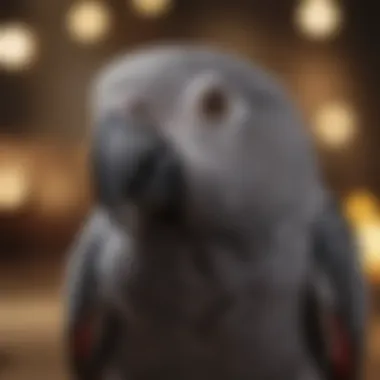
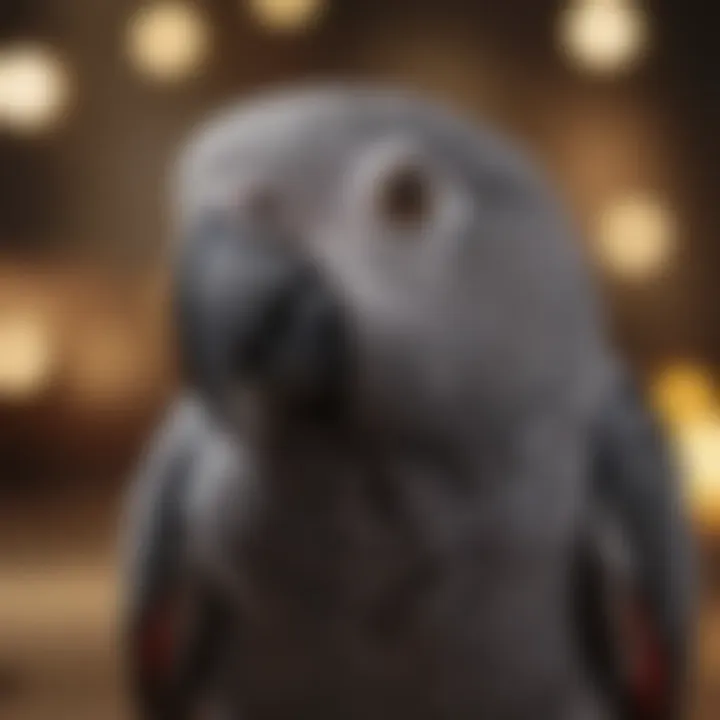
In summary, focusing on species traits, consistent training, and a supportive environment provides the best chances for a talking bird to develop its vocal skills. Understanding these elements forms the foundation of caring for speaking birds.
Care Requirements for Talking Birds
Taking care of a pet bird that can talk involves several important factors that directly impact their health and well-being. Understanding these care requirements is vital for any potential or current bird owner. Proper care not only ensures the bird stays healthy but also stimulates their ability to learn and communicate more effectively.
Diet and Nutrition
A balanced diet is essential for the overall health of talking birds. Their nutritional needs can vary by species, but generally, it should include a mix of seeds, pellets, fruits, and vegetables. Providing a varied diet helps to prevent nutritional deficiencies that can affect a bird's energy levels and cognitive functions.
- Seeds and Pellets: Select high-quality seeds and commercial pellets formulated for your bird's specific species. Pellets should make up a significant part of their diet, as they provide essential vitamins and minerals.
- Fruits and Vegetables: Fresh options like apples, carrots, and greens should be offered daily. Avoid avocado and chocolate, as they can be toxic to birds.
- Water: Clean, fresh water must always be available. Consider changing it daily for optimal hygiene.
Cage Setup
Creating the right environment in which your bird lives significantly influences their behavior and well-being. The cage should provide enough space for the bird to move about freely as well as opportunities for social interaction and mental stimulation.
- Size and Space: Ensure that the cage is spacious enough to allow for flight and movement. A general rule is to select a cage that is at least two times the wingspan of the bird.
- Perches and Toys: Use a variety of perches and toys to engage your bird. Different textures, sizes, and types of toys prevent boredom and stimulate various behaviors related to talking.
- Location: Place the cage in a busy area of your home where the bird can see and hear family activities. This exposure facilitates their social nature and encourages them to vocalize.
Exercise and Enrichment
Regular exercise and mental stimulation are crucial for talking birds. Birds require daily interaction outside of their cages to thrive, as they are naturally active creatures.
- Flight Time: Allow your bird to fly outside the cage in a safe, supervised environment. This freedom boosts their physical health and contributes to their vocal abilities.
- Interactive Play: Engage your bird with interactive toys or games. Training sessions can incorporate fun activities that enhance their learning capabilities.
- Socialization: Spend time with your bird daily. This interaction supports the bond between the two of you and reinforces their comfort in speaking.
"The right care can transform a pet bird into a great companion with a vibrant personality and engaging chat."
Training Techniques for Encouraging Speech
Training birds to talk is a nuanced process. It requires a combination of patience, strategy, and a keen understanding of a bird's natural behavior. The importance of tailored training techniques cannot be overstated, as they significantly enhance the likelihood of vocalization. Moreover, these techniques foster a stronger bond between the bird and its owner, promoting a healthy, interactive environment.
Starting with Basic Commands
When beginning the training process, introducing basic commands is essential. Simple words such as "hello," "bye," or the bird's name lay a foundation for future interactions. Starting with short phrases makes it easier for the bird to mimic sounds. Consistent repetition is key here. By frequently saying these commands during interactions, the bird gradually starts to understand and replicate the sounds.
Establish a routine. For instance, dedicate specific times of the day to practice. This not only helps in reinforcing the commands but also allows the bird to anticipate training sessions. Observations indicate that birds thrive on routine. As they become familiar with the sounds, try varying your tone and pitch. Birds often respond positively to engaging vocal patterns, which can stimulate their urge to communicate.
Using Positive Reinforcement
Encouragement plays a vital role in effective bird training. Positive reinforcement is a powerful method to motivate birds to speak. This involves rewarding them with treats or affection whenever they attempt to mimic words. This technique implements the principle of conditioning. Birds are more likely to repeat behaviors that yield pleasant outcomes.
Select rewards that your bird enjoys. Different birds may have different preferences. For a cockatiel, sunflower seeds might be the treat of choice, while budgies might prefer millet. Be consistent with your rewards; this helps reinforce desired vocal behaviors.
Additionally, keep track of the bird’s progress. Documenting milestones in their learning process can provide insights into which techniques work best for your bird.
"Training small pet birds to speak requires understanding, patience, and consistent practice on the part of the owner."
Incorporating these techniques allows pet bird owners to create engaging environments where speech can flourish. Balancing commands with rewards builds an atmosphere of trust, enabling the bird to express its vocal abilities effectively.
Challenges of Owning a Talking Bird
Owning a talking bird can be both rewarding and challenging. While the ability to converse adds a unique dimension to bird care, it also brings specific responsibilities and considerations. It's crucial for potential bird owners to understand these challenges to make informed decisions.
One primary consideration is the noise level. Birds, especially those known for their vocal abilities, can produce sounds that are loud and persistent. Managing these noise levels is essential for maintaining a peaceful home environment. Factors like the species of bird, its age, and the extent of its training can all affect how often and how loudly a bird vocalizes.
Another significant challenge relates to behavioral issues. Talking birds are not just pets; they are intelligent creatures that require mental stimulation and social interaction. When neglected or under-stimulated, they may exhibit undesirable behaviors such as feather plucking or excessive screeching. Addressing these behaviors is crucial for their well-being and for a harmonious cohabitation.
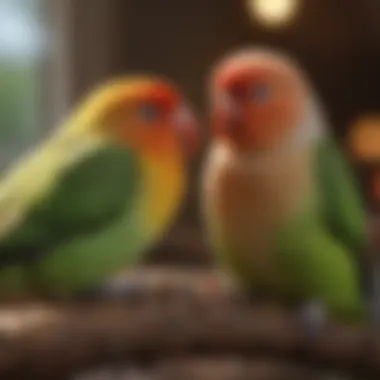
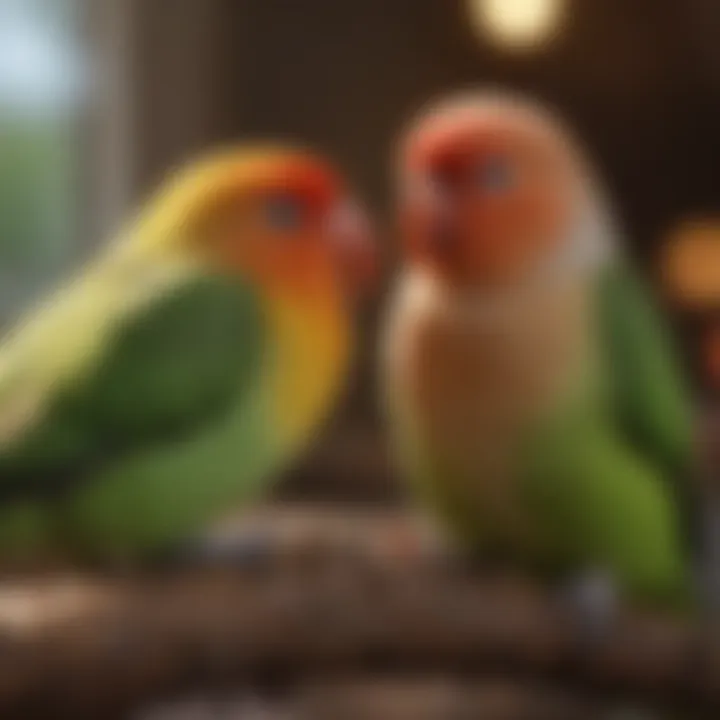
In summary, while the charm of a talking bird is undeniable, understanding these challenges prepares prospective owners for the commitment involved.
Managing Noise Levels
Noise management is one of the most critical aspects of owning a talking bird. Birds are naturally vocal, and many species can mimic sounds and speech convincingly. This vocalization can be delightful but can also become overwhelming, especially in shared living spaces.
- To better manage noise levels, owners can:
- Place birds in sound-absorbing rooms away from high-traffic areas.
- Use division barriers to lessen sound transmission.
- Establish specific times for quiet, allowing the bird to understand when it is appropriate to be loud and when not.
It is often beneficial to recognize the different vocalizations and what they signify. Some sounds may indicate excitement or playfulness, while others might signal stress or discomfort.
Dealing with Behavioral Issues
Behavioral issues in talking birds can arise from several factors, most notably lack of attention and insufficient stimulation. Birds are intelligent creatures with complex social needs. They must engage in activities that challenge their minds and entice their natural instincts.
- Common behavioral problems include:
- Excessive screaming
- Feather plucking
- Biting
To mitigate these issues, owners should:
- Ensure their birds have ample opportunities for social interaction, both with people and other pets.
- Provide toys and activities that stimulate their minds, such as puzzles or foraging toys.
- Engage in regular training sessions, employing positive reinforcement techniques to encourage desirable behaviors.
By understanding and addressing these challenges, bird owners can create a more harmonious living environment that benefits both them and their talking avians.
Social Aspects of Keeping Talking Birds
Understanding the social dynamics involved in keeping talking birds is crucial for their well-being and the joy they can bring to a household. These birds are not just pets; they are companions that thrive on interaction, both with their human owners and potentially with other pets in the home. Such interactions can enhance their quality of life and create a more stimulating environment.
Talking birds are social animals. They usually gather in flocks in the wild, making socialization a key factor in their behavior. When kept alone, these birds might feel lonely or bored, which can lead to behavioral issues like excessive screaming or feather plucking. It's essential to consider how the presence of other pets and humans affects their behavior. Ideally, a talking bird should engage in frequent social interaction to develop a well-rounded personality.
Interacting with Other Pets
Integrating talking birds into a multi-pet household requires careful consideration. Birds, especially those that talk, often have different social needs and communication styles compared to cats and dogs. Successful coexistence depends on the specific species of the bird and the other animals involved.
- Safety First: Ensure that all pets can interact safely. Birds are fragile and should not be left unsupervised with larger animals that may see them as prey.
- Gradual Introduction: Introduce pets to each other slowly. Observe reactions and interactions carefully. Provide ample opportunities for positive encounters.
- Unique Habitat: Maintain separate spaces for birds where they feel secure. For example, a cage or a bird-safe area can allow them to observe other pets without direct contact.
- Monitoring Behavior: Watch for signs of stress. If the bird displays fear or aggression, it may be best to separate them completely.
By respecting the unique needs of talking birds and other pets, owners can create a peaceful environment that fosters friendships among their animals.
The Impact on Human-Avian Relationships
The relationship between a talking bird and its human caregiver can be quite fulfilling. These birds often bond closely with their owners, enjoying their company and engaging in interactive play that involves vocalization. This bond can have multiple benefits:
- Emotional Connection: Talking birds respond to their owners and may mimic phrases or sounds. This interaction builds a sense of companionship.
- Cognitive Engagement: Owners can teach birds to recognize words and phrases. This process offers mental stimulation to both the bird and the owner, fostering a deeper connection.
- Behavioral Benefits: Birds that receive regular attention and interaction tend to be happier and more content. A positive relationship can lead to a more well-adjusted pet that is less likely to develop negative behaviors.
"The bond formed with a talking bird is unique; it transcends mere pet ownership. It's a partnership rooted in communication and understanding."
To cultivate a healthy relationship, owners should spend time talking to their birds, allowing them to become accustomed to human voices and language. This reciprocal interaction is critical, enhancing the connection between the bird and its human companion.
The End
The conclusion is a critical part of this article, as it synthesizes the key points discussed regarding small pet birds that can talk. It reiterates the significance of understanding the implications of owning such birds, as well as the various factors influencing their vocalizations. The bird species discussed have unique personalities and requirements, which must be considered by potential owners to ensure a successful companionship.
Revisiting the Benefits of Speech in Birds
Revisiting the benefits of a talking bird can give deeper insight into the value of these pet companions.
- Enhanced Interaction: Communicating with a talking bird can create a more engaging and interactive relationship between the owner and the pet. It fosters a close bond that one might not experience with non-speaking birds.
- Mental Stimulation: Teaching a bird to talk requires mental engagement for both the bird and the owner. It encourages the bird to think and learn, which keeps it mentally sharp and active.
- Entertainment Factor: A talking birds brings joy and laughter to one’s home. Their ability to mimic human speech can entertain owners and visitors alike.
- Social Engagement: These birds can be a source of conversation among friends and family, offering a unique aspect to social gatherings. Their presence can enhance social interactions.
In summary, the ability for small pet birds to talk not only enriches the lives of the birds themselves but also provides numerous benefits to their owners. The relationship nourished through speech is rewarding and demands thoughtful care and attention. Understanding these benefits encourages responsible bird ownership and enhances the overall experience.















